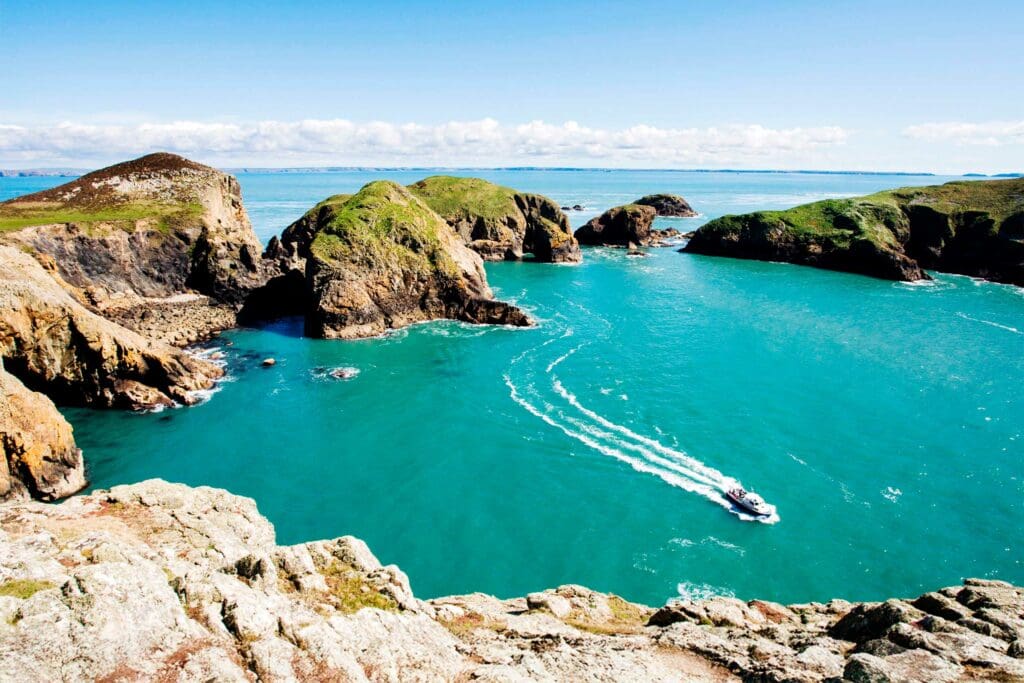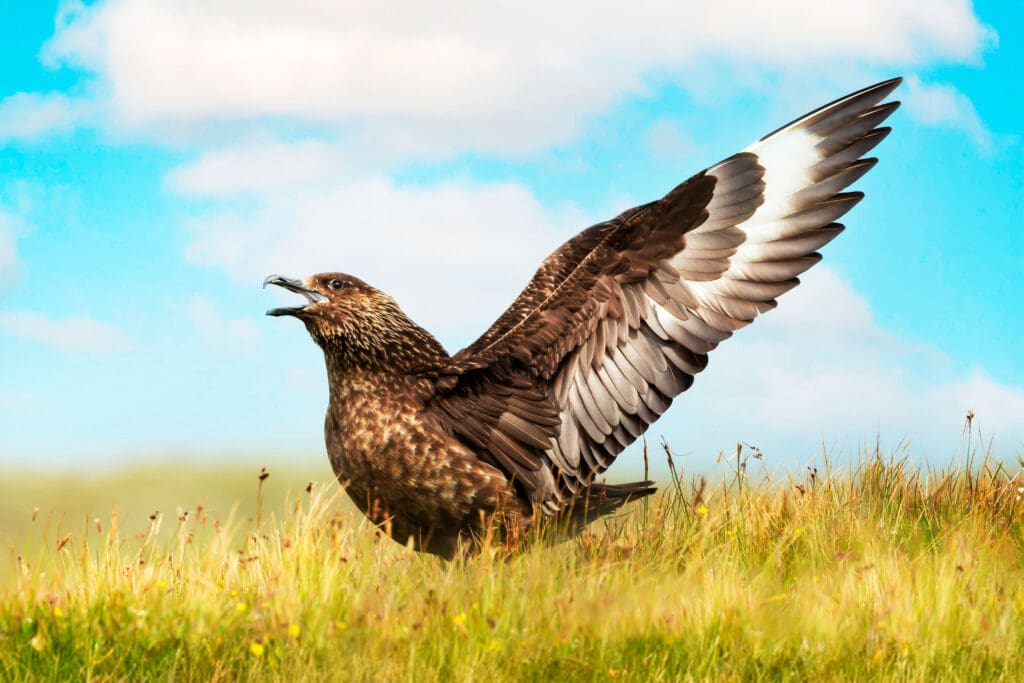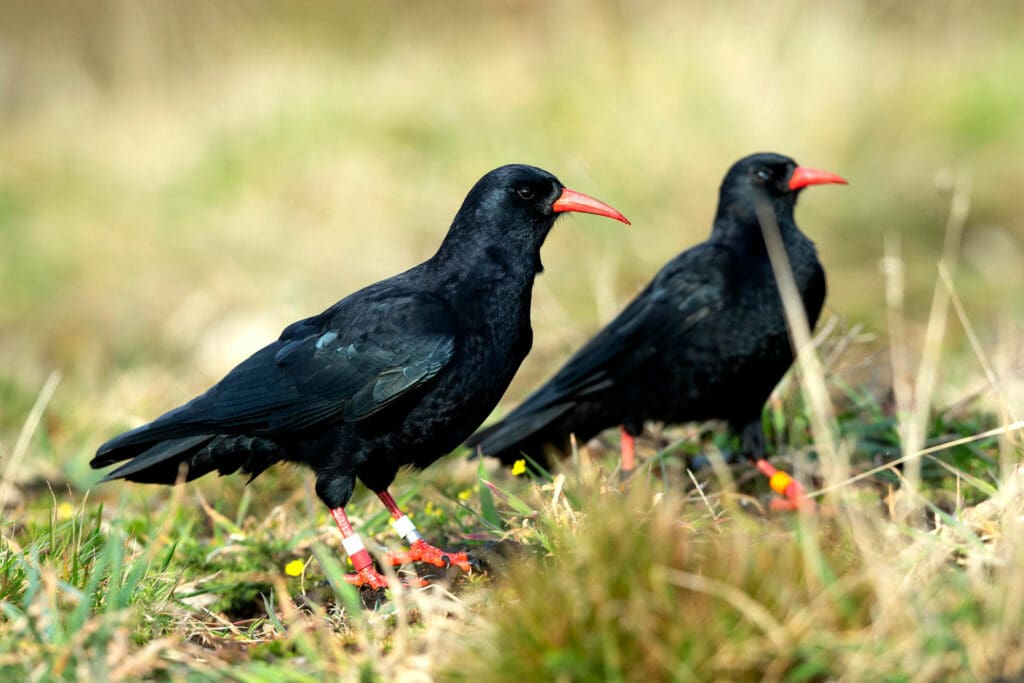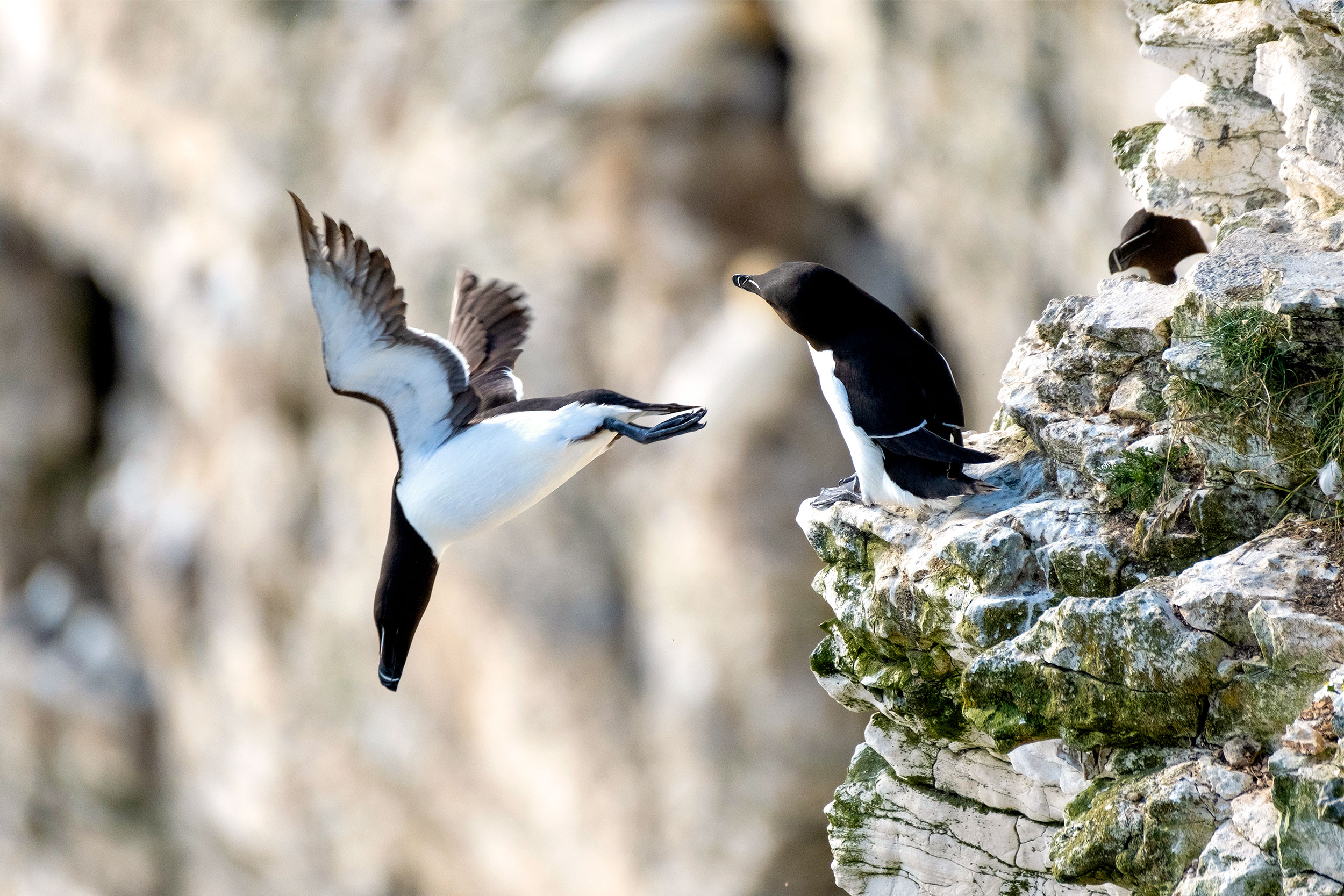Sea cliffs can be ‘hard’, with enduring rock faces of plunging granite, sandstone, basalt or limestone, or ‘soft’, with crumbling, folding slopes of shale and mudstone. Both are created as an interaction between the land and the erosion of wind, waves and salt water. Hard, inaccessible and steep cliffs provide safe nesting sites for seabird colonies.
Read about the vibrant wildlife on and around the sea cliffs of RSPB Rathlin Island.
An internationally significant eight million seabirds return to UK cliffs to breed each spring and early summer, after months out at sea, in an unforgettable sensory spectacle.

RSPB Bempton Cliffs. Photo: Mike Kipling Photography (Alamy Stock Photo)
Seabird colonies are typically home to a range of seabirds. Tightly packed, raucous Guillemots and Kittiwakes nest on ledges alongside Gannets, Shags and Cormorants as well as gulls, Fulmars and Razorbills.
As well as RSPB Bempton Cliffs in England, you can visit RSPB South Stack in Wales (known for Choughs), visit RSPB Fowlsheugh in Scotland or head to RSPB Rathlin Island in Northern Ireland.
You might also like

How to be an island defender

Red alert for seabirds



